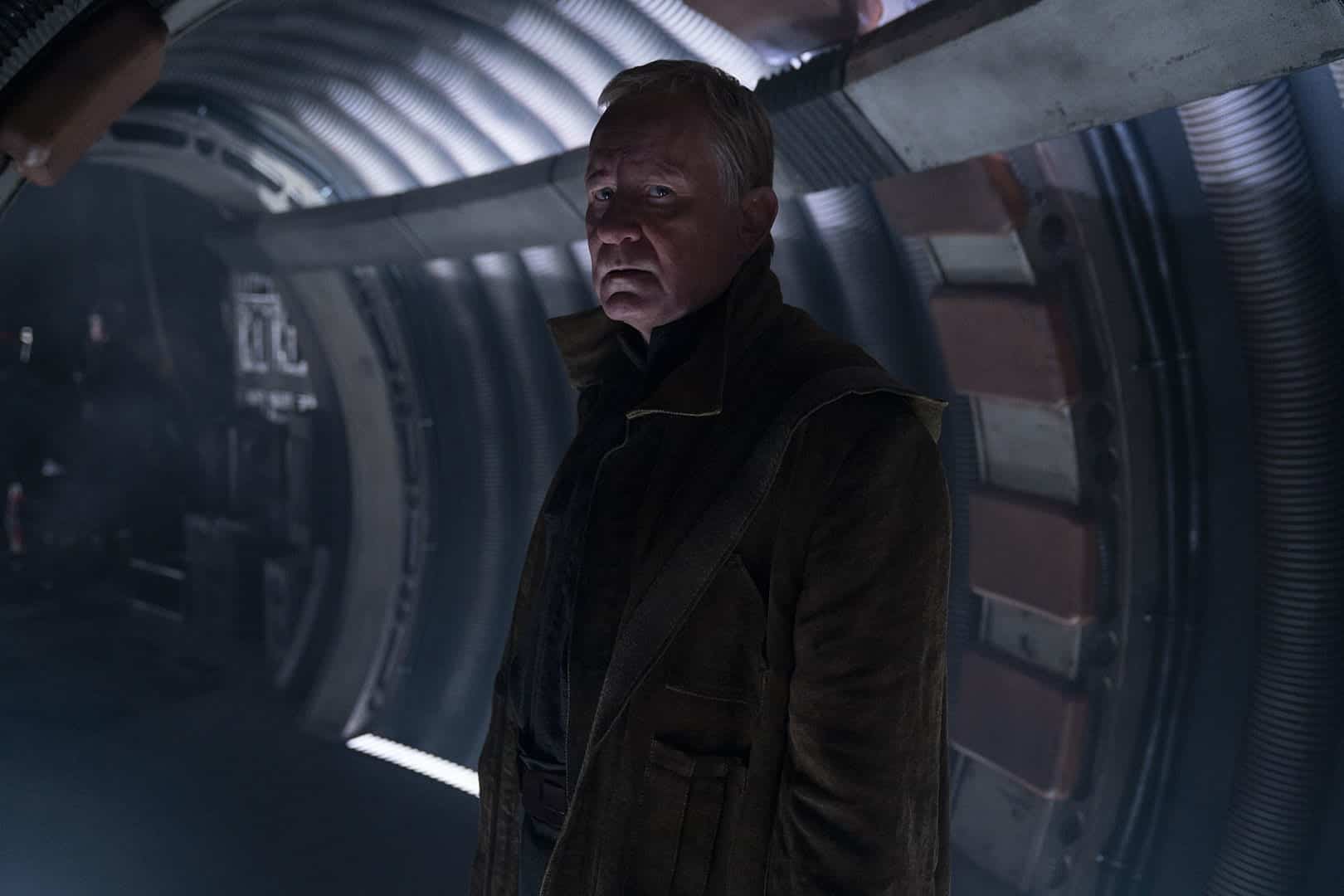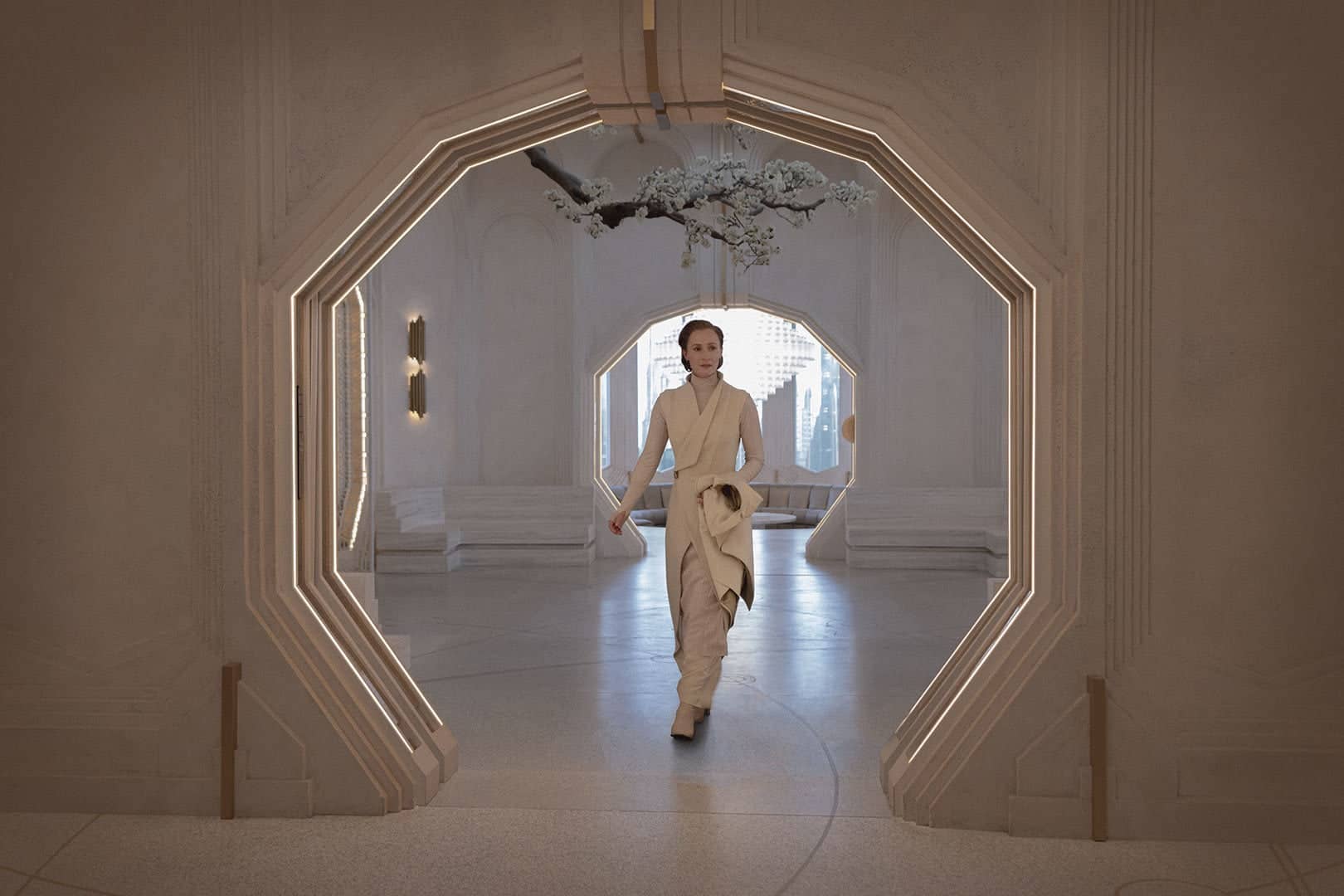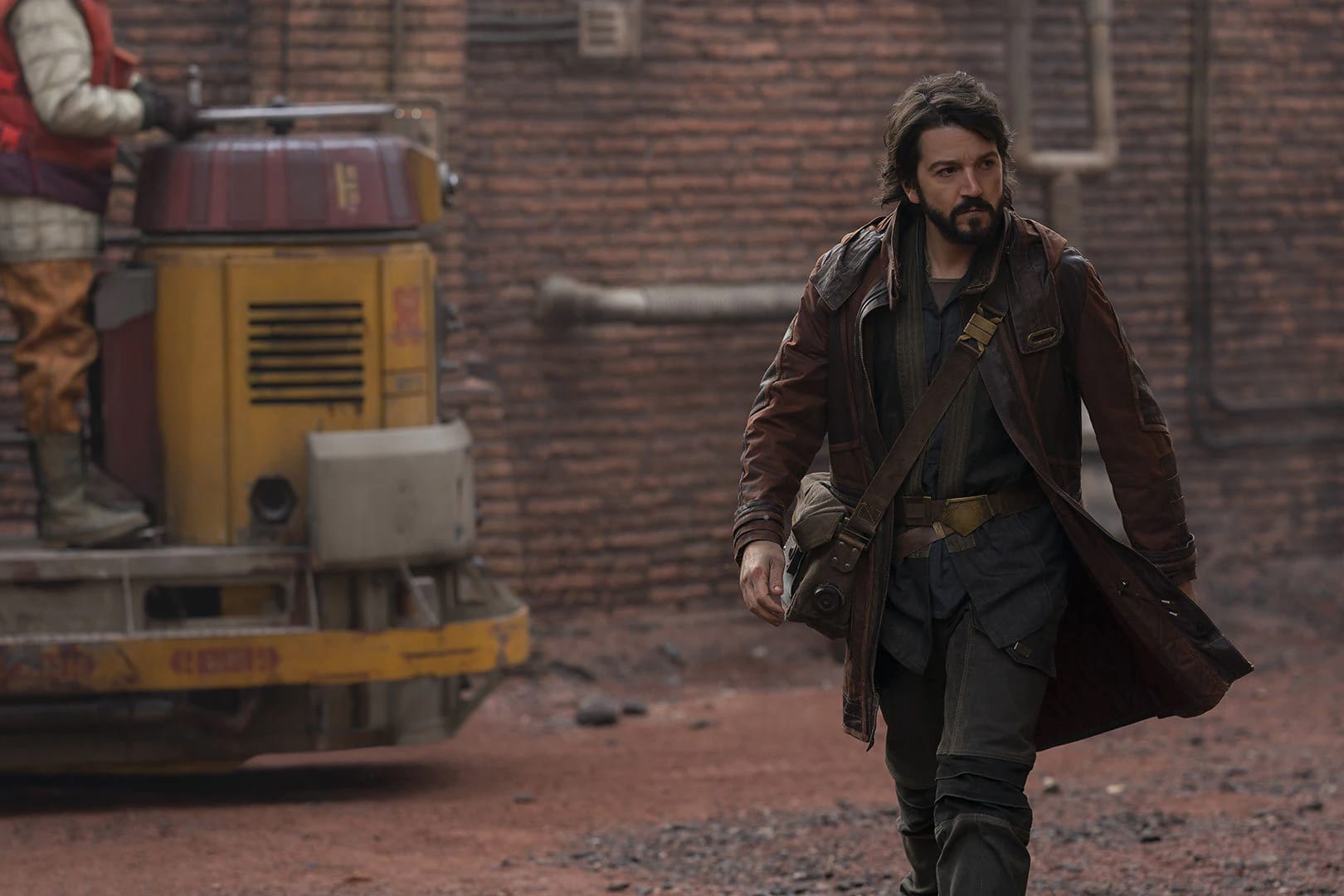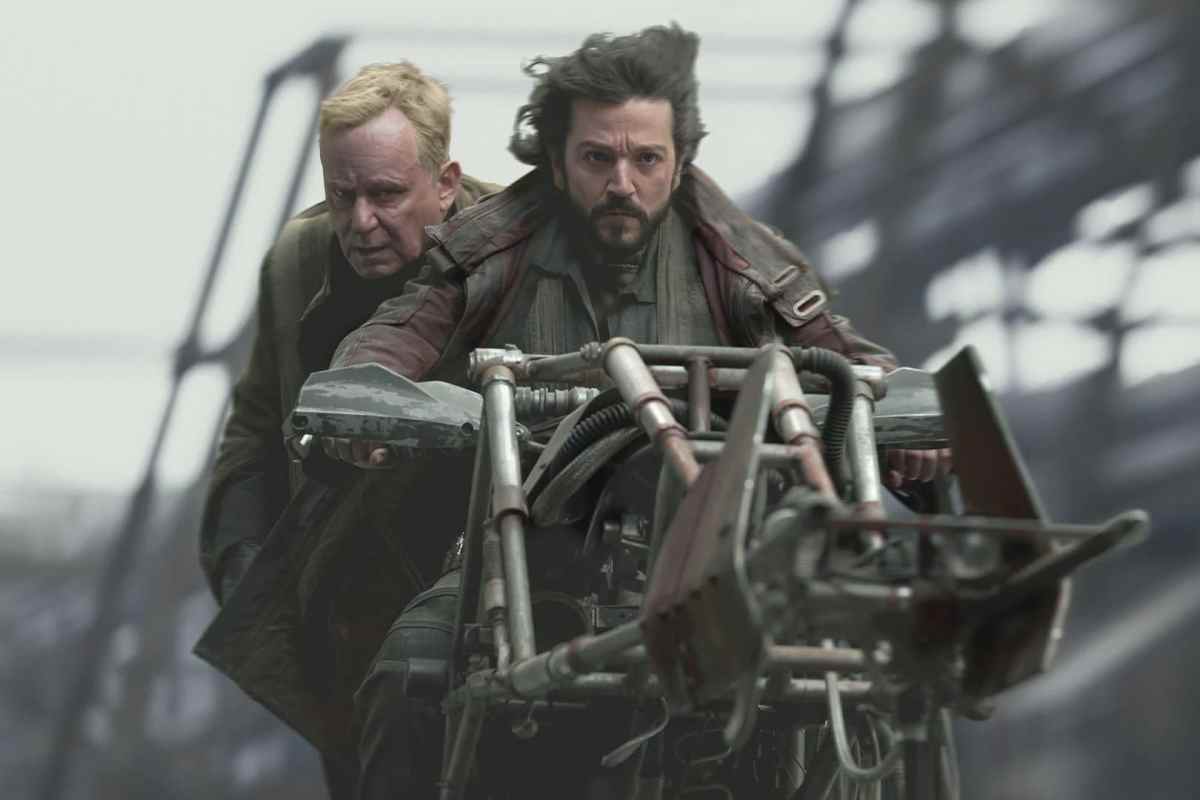This discussion and review contains light spoilers for the three-episode premiere of Andor on Disney+.
Andor provides the live-action Star Wars franchise with something that it has been sorely missing for the better part of five years: a clear creative vision.
In terms of sheer volume, this is a golden age for franchise media. It seems like major studios are pumping out more content from existing intellectual property than ever before. Marvel Studios has produced more hours of screen time in the past two years than in the previous 12 combined. There has been more Star Wars released on Disney+ — a service that launched with The Mandalorian just under three years ago — than there has been released in theaters over the past 45 years.
There is no sign that this is going to slow down. Marvel Studios recently announced that Daredevil: Born Again would run for 18 episodes, appreciably longer than any of its streaming shows to date. The first season of Andor will run for 12 episodes, longer than any individual season of The Mandalorian or The Book of Boba Fett. The original plan was for Andor to run a full five seasons, although that has since been truncated to two seasons. The trend is only going to accelerate.
However, so much of this modern franchise media lacks the clear identity or perspective that made fans fall in love with the original in the first place. The advent of streaming, and perhaps fear of crowds on the internet, has pushed studios towards a model perhaps best described as “content soup.” It’s a hollow nostalgia that treats these franchises as religious objects that can be mercilessly strip-mined, instead of as living objects that can be allowed to grow organically.
Star Wars is by no means the only major franchise affected by this approach. However, allowing for minor miracles like the animated series Visions, Star Wars has found itself desperately looking for a strong creative voice. The second season of The Mandalorian was effectively an extended series of commercials for the franchise’s back catalog and upcoming slate. The Book of Boba Fett was so lacking any central identity that it just turned into The Mandalorian for two of its seven episodes.

The live-action Star Wars franchise has been lacking a central creative vision since The Last Jedi in December 2017. Rian Johnson’s blockbuster was a critical, commercial, crowd-pleasing smash, even if it generated a vocal backlash from certain online fans. The next theatrical Star Wars film, Solo: A Star Wars Story, felt like a rejection of the very idea of authorship and a template for the brand going forward. The original directors were fired during production, replaced by Ron Howard.
This is why it is so surprising and so refreshing that Andor almost immediately establishes itself as a Star Wars spinoff with a strong perspective. Part of this is simply technical. The first three episodes, which are being released as a premiere, are all directed by Toby Haynes. The original plan was for writer Tony Gilroy to direct the opening triptych, but the job went to Haynes after Gilroy (reasonably) declined to relocate to the United Kingdom during a global pandemic.
Haynes is one of the most interesting directors working in British television. He worked with British writer Steven Moffat on both Doctor Who and Sherlock. On Doctor Who, Haynes directed a strong contender for the best five-episode run in the show’s long history, spanning from “The Pandorica Opens” to “Day of the Moon.” On Sherlock, Haynes was responsible for “The Reichenbach Fall,” the story with the cliffhanger that cemented Sherlock as a genuine cultural phenomenon.
Part of what distinguished Star Wars from so much contemporary science fiction was the idea of the “used future.” The franchise’s world felt real and tactile, rather than hermetic and abstract. Of course, the franchise would become increasingly toyetic as it went on, but the original film felt dirty and grimy. Those polished white stormtrooper helmets were caked in sand and dust. Luke Skywalker (Mark Hamill) and his friends waded through trash compactors and waste pipes.

Too much of modern Star Wars can feel trapped in a literal bubble. Much has been made of how The Mandalorian uses a visual effects technology known as “The Volume” to recreate any environment. In theory, this is great. Recently, Matt Reeves’ The Batman made impressive and atmospheric use of the same technology to create its urban skyline. In reality, this technology meant that The Mandalorian kept recycling familiar spaces: desert planets, ice worlds, forests.
Gilroy decided very early on that Andor would favor locations and sets over that technology. “Nobody’s against The Volume — The Volume is fantastic for the things that it’s for,” he explained of the decision. Instead, Andor has been shooting on location in the Scottish Highlands and Dorset. There is a sense of place and weight to this. Andor feels tactile and tangible in a way that is markedly different from the clumsy hyperreality of The Book of Boba Fett.
This is obvious from the opening sequence. Cassian Andor (Diego Luna) visits a grotty bar on Preox-Morlana. He is looking for a girl. It is a setup straight from an old-fashioned film noir, with Gilroy himself summarizing the premise as “a very simple, almost film noir situation for a thief.” Haynes leans into this. The show uses light effectively, adopting a neon aesthetic that highlights shadows and negative space. There are moments when Andor appears framed almost in silhouette.
On his way home, Andor finds himself the victim of a stick-up by two drunken members of the local corporate security detail, Verlo (Stephen Wight) and Kravas (Lee Boardman). The situation goes badly. Andor wrests a gun from one of his muggers. In the struggle, Verlo falls the wrong way and hits his head. He dies. Realizing that the stakes have escalated, Kravas begs for mercy. Andor acts almost reflexively. He shoots Kravas in the head, understanding there can be no witnesses.

It’s a shocking and brutal moment. It very directly evokes Andor’s execution of his informant (Daniel Mays) early in Rogue One. This isn’t something that a hero is supposed to do. It certainly isn’t how modern Star Wars heroes behave. The Mandalorian turned Din Djarin (Pedro Pascal) from a merciless bounty hunter into a goofy dad. The Book of Boba Fett presented its title character (Temuera Morrison) as less of a local crime lord and more of a union shop steward.
There are several moments like this in the three-episode premiere. At the climax, Andor and Luthen Rael (Stellan Skarsgård) turn a speeder into an improvised explosive device targeted at a military checkpoint. It’s a scene that feels much closer to Zero Dark Thirty than The Rise of Skywalker. Then again, as befitting a prequel to Rogue One, this is taking Star Wars back to its roots as an allegory about contemporary geopolitics. This is a story of insurgents facing an occupying army.
Star Wars began as an homage to the films that George Lucas loved growing up — war movies and samurai epics fused with science fiction serials. As with Gilroy’s work on the Bourne franchise or Michael Clayton, Andor draws heavily from the paranoid neo-noirs of the 1970s. It is built around Gilroy’s preoccupations and interests, with the opening three episodes exploring the murky space between the public sector and private interests, or the dangers of ambitious middle management.
There is a clarity of purpose to all this. The big action set piece in the third episode begins with chains and reels flying around an abandoned warehouse. It is a sequence that relies on weight and counterweight. Like so many good action scenes, it is a lesson in physics that emphasizes that these objects have mass and heft. It is also a direct manifestation of one of the show’s core themes — the idea that action and reaction are inevitably interconnected.

There is furthermore a compelling humanity to all this, which can get lost in the grand mythos of “the Skywalker Saga.” Andor obviously inherits characters and concepts from Rogue One, but it isn’t saturated with the same level of fan service as The Mandalorian or Obi-Wan Kenobi. Its moments are often small and personal. The explosive situation at the climax of the third episode results from petty and personal decisions: Timm Karlo’s (James McArdle) jealousy, Syril Karn’s (Kyle Soller) pride.
All of this style exists in service of something more. For the first time since The Last Jedi, it really feels like Star Wars has something meaningful to say about the world in which it exists. Rogue One was a massive hit, and many critics have argued that the movie resonated with the mood of December 2016. Rogue One hit differently in the wake of the election of Donald Trump and resurgent neo-fascist movements. “I rebel” in some ways prefigured “she persisted.”
For the first time in almost half a decade, Andor seriously considers what it means to be Star Wars in the modern world. As showrunner, Gilroy has thought about what it means for the Rebel Alliance to be an alliance and what it means for the Galactic Empire to be an empire. Just three episodes in, Andor has a clear arc ahead of him, even if the end is already set in stone. Andor is a story about what it means to live with ascendant and creeping fascism, both personally and culturally.
Cassian Andor is a young man looking for a purpose and a vision. It’s only three episodes in, but Andor might have helped the Star Wars franchise to find both again.






Published: Sep 21, 2022 10:00 am